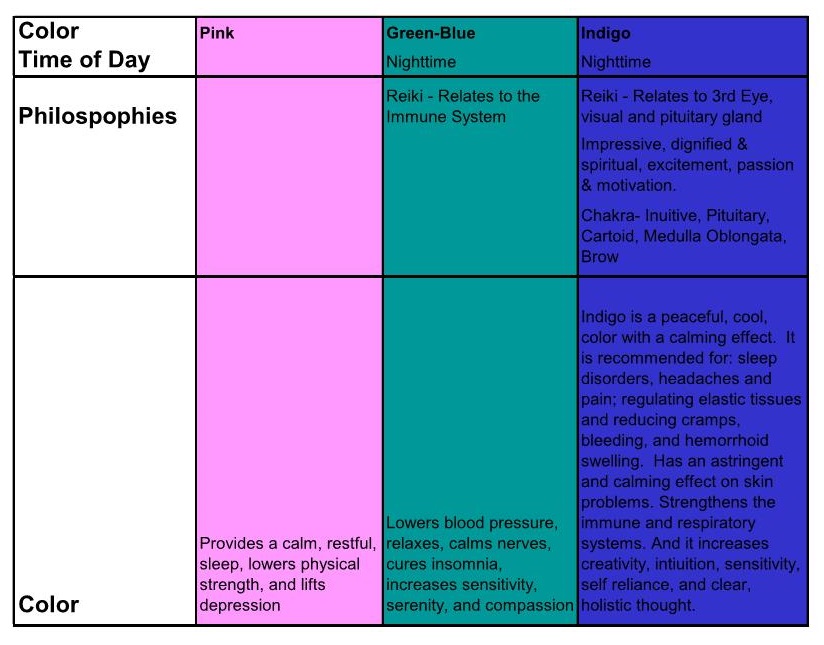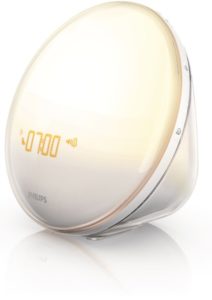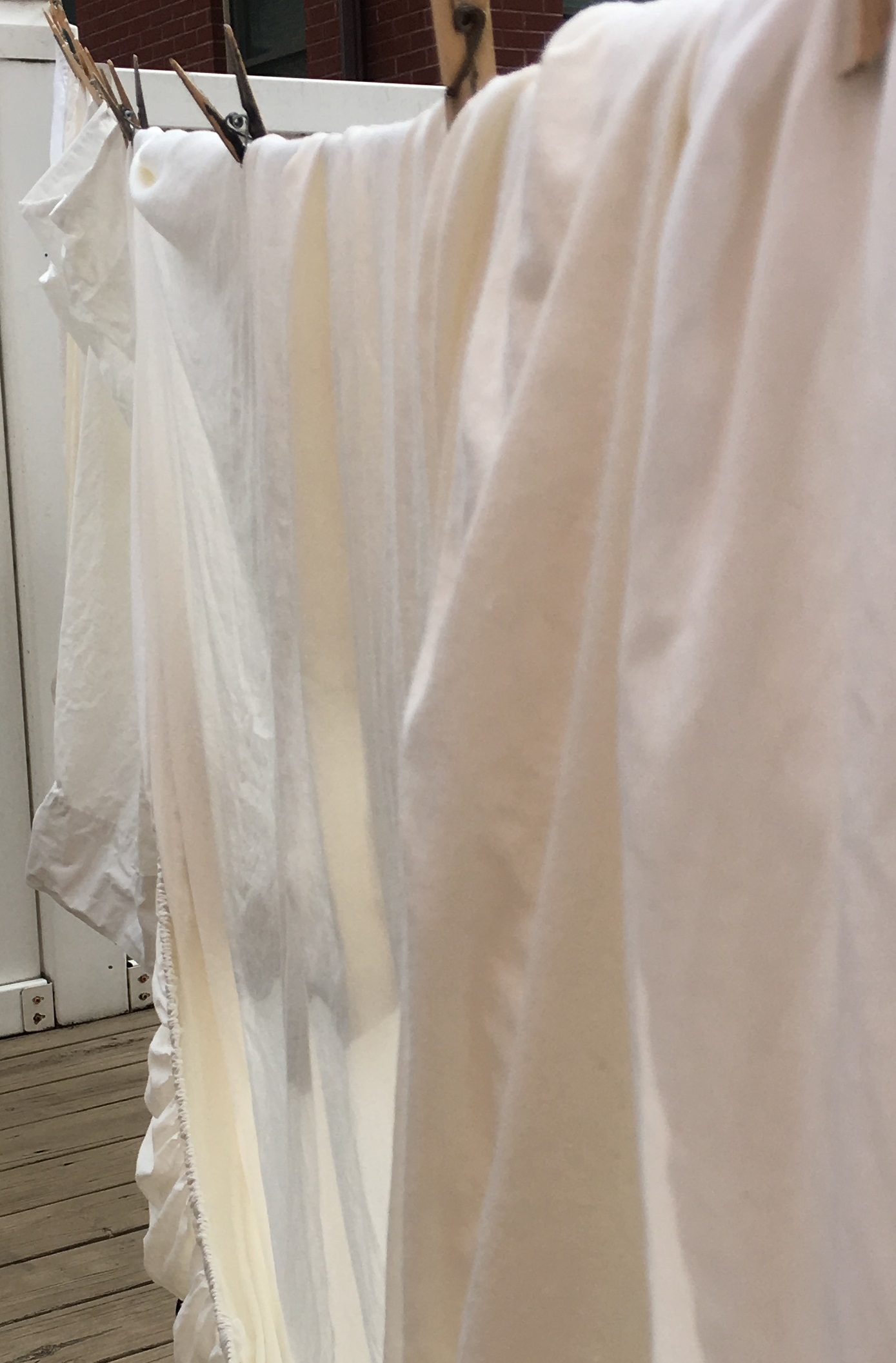You spend lots of time at work every day. Rewarding yourself with a beautiful, health inducing, sustainable sanctuary to rest your weary head is just what the doctor ordered. Your bedroom is a place for relaxing, playing, stretching, and… oh yeah, sleeping. You need 7-9 hours of sleep a night to be rested, healthy, and fit for the next day’s adventures. Less than that and you become sleep deprived, a condition that can lead to lots of health issues including: obesity, depression, heart disease, high blood pressure, and stroke. But it isn’t just the hours of sleep that make a difference between a good and bad night’s sleep – the quality of the sleep is influenced by environmental factors, comfort, and your circadian rhythm. So how can you transform your sanctuary to be a calm, restful, healthy space?
First, Set the Stage:
Add Some (But Not Too Much) Color: Adding tones of quiet pinks, indigos and green-blues induces calm and relaxation while releasing creativity. Painting two-three walls white or off-white and adding a bit of diversity by painting one-two walls a restful color (see chart) can help to create a peaceful mood.
two-three walls white or off-white and adding a bit of diversity by painting one-two walls a restful color (see chart) can help to create a peaceful mood.
Keeping toxins out of your bedroom is key. To reduce your exposure while painting, use low-to no-VOC [Volatile Organic Compounds] paints and open the windows to provide good ventilation. Also, let the paint cure for one-two days before sleeping in the room. There are many low- to no-VOC paints available ranging from water based, to clay, lime, or milk.
Then Add Some Light: Waking up to sunshine streaming through your windows is the best thing for a great day. The gradual lightening of your room as the sunrises brings you naturally awake. But what about in the short days of winter? You can mimic the natural rhythm of the sun with a clock that ‘resets’ the sunrise in time with your alarm to nudge you awake before the bells ring!
sunrises brings you naturally awake. But what about in the short days of winter? You can mimic the natural rhythm of the sun with a clock that ‘resets’ the sunrise in time with your alarm to nudge you awake before the bells ring!
Sunlight has natural antibacterial properties that can help keep your room healthy just by streaming in the window so open up those blinds and curtains while you are at work.
Nighttime bedroom light levels should be soft and peaceful but flexible enough to help you find your socks in the morning-that is where dimmers come in very handy. Installing dimmer controls for recessed ceiling lights allows you to set the mood. In today’s lighting vernacular, that soft, warm light will come from light bulb with a color temperature of around 2700 Kelvin. Recommended lighting levels for general lighting are 230-270 lumens (about 4 watt LEDs) and 450-500 lumens for task or reading lamps (about 5-6 watt LEDs).
Then Add Fresh Air: Ventilation and fresh air are important for a good night’s sleep and for keeping your bedroom from becoming stuffy and, heaven forefend, moldy and dank. The best air freshener is fresh air so open your windows at least once a week – even in winter – and air the place out. If you can, sleep with the windows open. Do not use air freshener sprays, solids, or plug-in’s as these add pollutants to the air that cause bronchial congestion and many contain phthalates which can cause: birth defects, reduced testosterone, liver and kidney toxicity, allergies and asthma, and cancer.
Adding plants will not only enliven the room, they – just by looking at them – help to reduce stress and lower blood pressure, and they will help clean the air and provide oxygen. NASA studied the best plants for cleaning/ oxygenating indoor air.
Installing and using a ceiling fan helps to keep the air moving and increase comfort levels but be careful to place it so it points down toward the bottom of the bed, not at your head, to avoid annoying drafts and breezes while you sleep.
Next, Reduce the Clutter: Think about what you need in your bedroom: A bed, places to put your clothes, maybe a comfy chair, a bedside table and a lamp. Look around at all the other stuff you have in the room. Do you need it? Does it help you to be calm? If not, find it a new home in a closet or a resale shop.
And Keep the Dust at Bay: A little disgusting but dust mites love to eat dust, flaked off skin, shed hair, and other detritus and then they digest and leave excrement – it is the later that we breathe in and are often allergic to. Yuck! The best way to combat these buggers is cleaning.
Now that we decluttered, dusting is a breeze. Use electrostatic cloths and the dust will be trapped on the cloth until you shake it outside and wash it. Avoid using any polishes or oils as they can add toxins to the air. And then do the floors twice a week with your HEPA filter vacuum.
Once a week wash your linens and if you can, hang them out to dry for an antimicrobial sun bath and then finish them in the dryer to soften them up.
Second, Make A Comfy, Cozy Bed:
Start With Your Pillows: You spend about 33% of your life sleeping so you deserve the very best pillow possible. Choosing a pillow filled with certified organic cotton or pure grown wool, or a mixture of the two all encased in a certified organic cotton cover ensures that there are no residual chemicals or pesticides in your pillow. Replace your pillows every few years.
Then Your Sheets, Pillowcases and Duvet Cover: Splurge on a new set of sheets that are certified organic cotton (make sure the label says certified otherwise the cotton field may have been sprayed with noxious chemicals) and are unbleached and undyed. Avoid cotton/poly blends because the polyester contains formaldehyde which is a chemical known to cause immunological problems and cancer. It can also cause: insomnia, respiratory issues, headaches, excessive thirst, coughing and watery eyes.
And Blankets: Avoid synthetic fibers and choose certified organic cotton or pure grown wool to avoid chemical finishers, flame retarding additives, and pesticides.
 Take a Look at Your Mattress: This is an expensive item. If it is looking a little down in the heels, you should consider replacing it but if it is comfy and in good shape then maybe give it a spritz to freshen it or cover it with a pillow top:
Take a Look at Your Mattress: This is an expensive item. If it is looking a little down in the heels, you should consider replacing it but if it is comfy and in good shape then maybe give it a spritz to freshen it or cover it with a pillow top:
Step 1: Spritz with your homemade lavender spray – 1/2c filtered water mixed with 2-4 drops of pure lavender essential oil. Shake well and then finely spritz the mattress for an antiviral, antibiotic treatment. Let this dry completely before remaking the bed.
Step 2: Top your older mattress with an organic mattress pad or a tufted lamb’s wool under blanket or pillow top like the OMI Wooly Lite. Make sure the mattress topper you select does NOT contain: synthetic chemicals, flame retardants, mothproofing or synthetic foam.
Step 3: Replace your worn-out mattress with one constructed with certified organic cotton or pure grow wool (naturally flame-resistant), or, if you are not allergic, 100% pure or natural latex. Also make sure to select a mattress that has no added flame retarding chemicals.
Shockingly, most mattresses are made of a toxic soup of chemicals including: formaldehyde, polyurethane, polyvinyl chloride, benzene, the flame retarding, bio-accumulative Polybrominated diphenyl ethers (PBDEs) and chlorinated Tris (TDCPP). These chemicals emit VOCs and off gas overtime and have been linked to: hormone disruption, behavioral changes, fetal malformations, learning and memory impairment, delayed puberty onset, respiratory problems, neurotoxicity and cancer, many contain phthalates that affect the reproductive system.
When shopping for a chemical free mattress look for the Global Organic Textile Standard (GOTS) label or, if shopping for a latex mattress, the Global Organic Latex Standard (GOLS) label. The GOTS label indicates that at least 95% of the materials are certified organic and that in the other 5%, chemicals such as flame retardants and polyurethane are prohibited.
Third, Furnish Your Tranquil Space:
When shopping for bedroom furniture think comfortable, beautiful and practical but first think high quality with no VOCs, toxic glues, particle board or noxious chemical stains and finishes.
When looking for floor treatments, think throw rugs instead of wall-to-wall. Throw rugs can be put outside for shaking and to be aired and they can easily be rolled up to vacuum the floor. If you must have wall-to-wall, choose carpet squares from Interface or Flor. These are non-toxic and can be sent back to the manufacturer for recycling at end of life.
Fourth, Rest Yourself:
Reduce Your Exposure to Electromagnetic Radiation: Electronic devices have become part of our lives but we don’t have to sleep with them. Each device that is plugged in and charging emits an electromagnetic field that interferes with sleep patterns. If you must have your phone charging in your room, move it and its plug at least 4’ away to the side or toward the foot of the bed – a great outcome will be that you might never sleep through your alarm again because you have to get up to run it off. Also, try to reduce the amount of electrical appliances in your bedroom and unplug the ones that are there when you are not using them.
Kill the Blue Screen: Even APPLE with its new red-orange night time screen recognizes the ill effect that the blue light from the LCD screens of our phones, tablet readers and iPads, and computers has on our circadian rhythms and sleep patterns. In the best world you would put the phone away 2-3 hours before going to bed to encourage your melatonin levels to move back to normal. At least put the phone at least 4’ away and place it face down with the sound off or on very low when you go to sleep to limit disturbance and move its EMR field away from you. Oh, and use an old-fashioned wind up or battery-operated alarm clock to help you wake up from your sound sleep. Read More: https://www.health.harvard.edu/staying-healthy/blue-light-has-a-dark-side
After you wake up from your restful sleep, stretch and get ready because next we tackle the kitchen.
